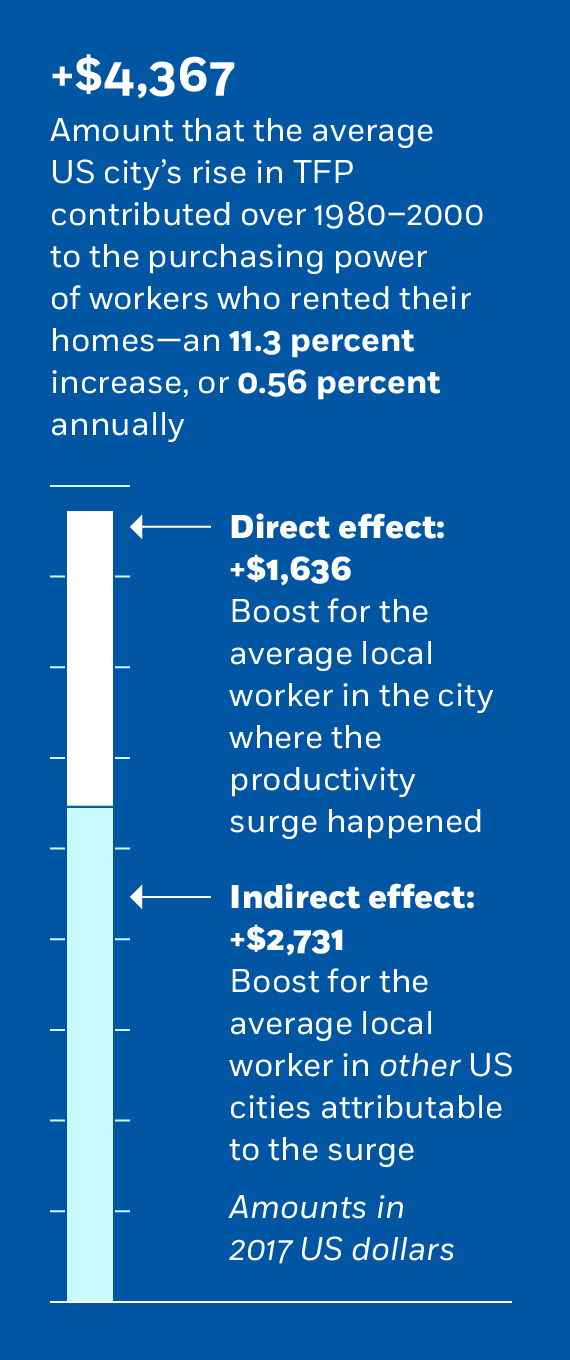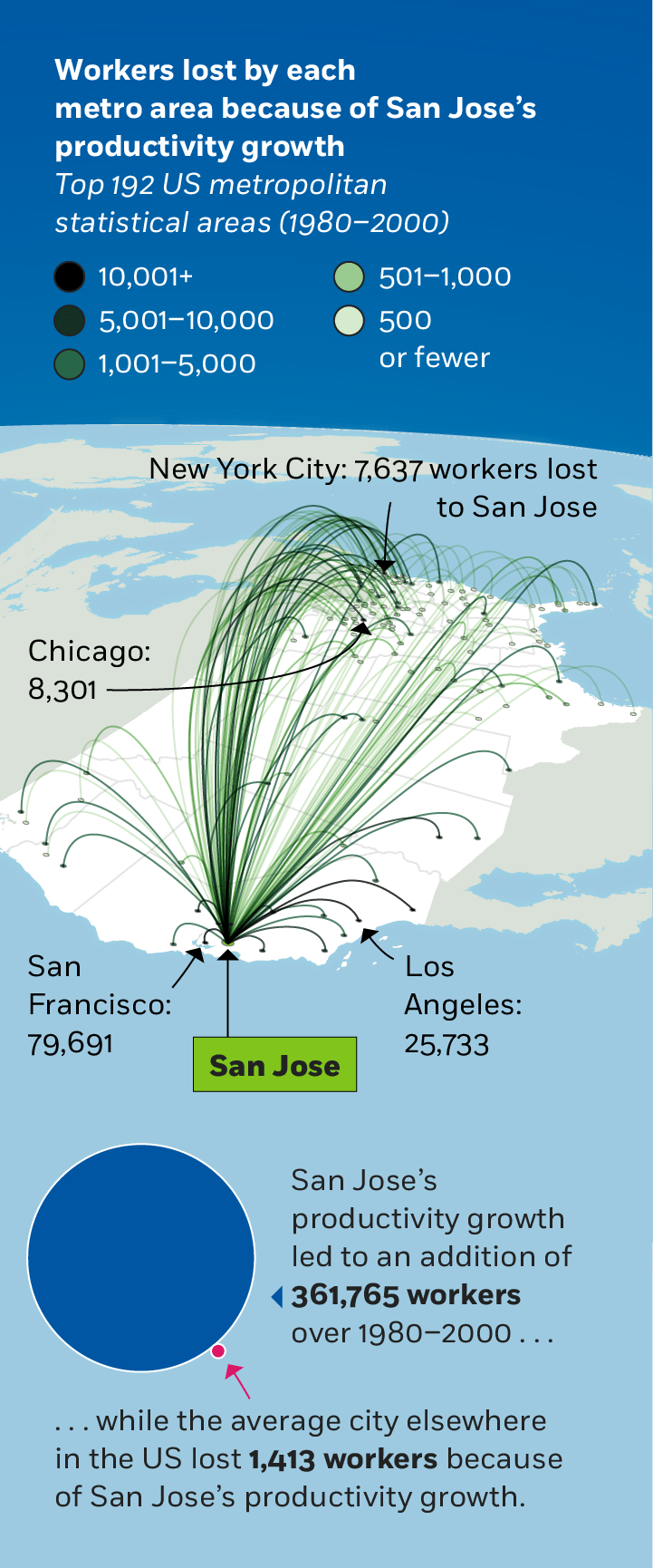When big cities experience an economic boom, you expect an upsurge in wages and growth in those areas. But there’s some nuance: according to Chicago Booth’s Richard Hornbeck and University of California at Berkeley’s Enrico Moretti, one area’s surge particularly benefits low-skilled workers locally—and high-skilled workers elsewhere.

Using total factor productivity (TFP) as a measure of local productivity growth, Hornbeck and Moretti analyzed two decades of data from major US cities to quantify the direct effects on people living in booming cities and the indirect effects on people elsewhere. Allowing for trade-offs between salary and cost-of-living increases, as well as unequal distribution of benefits across different groups, the researchers find that low-skilled workers gained the most from local productivity growth.
But gains extended further afield: a boom in San Diego or Los Angeles, say, was also felt in other cities. And high-skilled workers gained more from productivity growth in other cities.
The data Hornbeck and Moretti analyzed, spanning 1980 to 2000, focused on cities that experienced higher productivity growth because of a concentration of rapidly innovating industries, compared with cities that had a concentration in industries with less growth.
“Our main result is that local productivity growth does seem to be delivering sizeable and similar gains to higher- and lower-skilled workers, of roughly 0.5 to 0.6 percent year-over-year,” Hornbeck says. “Locally, in the cities experiencing major growth, some of these benefits are lost to increases in the cost of living as people crowd in from elsewhere. But across the nation, increases in living costs in particular cities are counterbalanced by decreases in housing costs in other places.”
Locally, lower-skilled workers benefited more
When a city started booming, there was a greater impact on nominal earnings and purchasing power for high-school graduates than for college graduates, which suggests that local productivity growth acted to compress local income inequality.
One city’s productivity boost indirectly helped other cities
While boomtowns lured highly skilled workers from other cities, those who stayed behind still enjoyed wage increases because such workers were scarcer. Further, in the cities that people were leaving, the cost of living declined. For renters, this was good news, as it translated to lower costs.

One intense productivity surge: San Jose, California
Silicon Valley’s rise as a tech hub lured hundreds of thousands of workers away from other US cities. The researchers calculate that the San Jose metro area experienced TFP growth of 16.4 percent over 1980–90.

Richard Hornbeck and Enrico Moretti, “Who Benefits from Productivity Growth? Direct and Indirect Effects of Local TFP Growth on Wages, Rents, and Inequality,” Working paper, May 2018.
Your Privacy
We want to demonstrate our commitment to your privacy. Please review Chicago Booth's privacy notice, which provides information explaining how and why we collect particular information when you visit our website.
